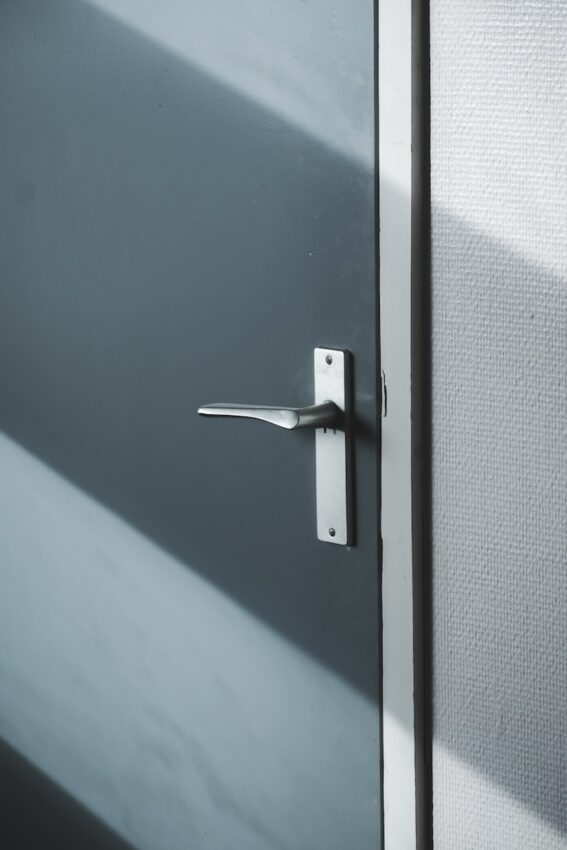At the job site, the air buzzed with the sounds of renovation, but one contractor stood out—grunting in frustration. A seasoned worker, muscles tense, struggled with a heavy steel access door while balancing on a ladder. The scene captured a common challenge in remodeling projects: installing bulky doors in tight, awkward spaces.

This isn’t just a workplace issue—it also happens in residential renovations. Lifting and fitting heavy access doors in areas like utility closets, hallways, or attic spaces puts serious strain on the body. Back pain and fatigue can build up fast, turning into long-term injuries. Add in narrow layouts or limited overhead clearance, and the risk of slips falls, and missed deadlines increases.
Heavy doors also create a labor challenge. They usually require multiple people to move and install, which complicates scheduling and costs. When handling is rushed or mismanaged, it can lead to misaligned frames, damaged walls, or the need to redo work—none of which helps the timeline or budget.
In short, moving heavy access doors into tight spots is physically demanding and puts safety, efficiency, and project outcomes at risk.
The Transformative Power of Lightweight Access Doors
Lightweight access doors are transforming the construction industry by boosting efficiency, enhancing safety, and delivering significant cost savings for property owners, contractors, and builders.
Reduced Weight, Increased Convenience
The standout benefit of lightweight access doors lies in their innovative design, typically made from durable aluminum or thinner steel. Their reduced weight simplifies installation from the moment they arrive and makes handling a breeze compared to their heavier alternatives.
Protecting the Workforce
These access doors prioritize worker safety by substantially lowering the risk of strains and back injuries commonly associated with lifting hefty materials. Their lightweight construction diminishes the chances of accidents during installation, resulting in lower insurance premiums and less downtime.
Maneuverability at Its Best
In confined renovation environments, lightweight access doors, like the BAC-BLW-D lightweight access door, shine with exceptional maneuverability. They can effortlessly be positioned in tricky spots, like small attic hatches, without the frustration of bulkiness that often goes with traditional, bulkier doors.
Speedy Installations
Thanks to their lighter weight, these doors ease rapid installations, allowing skilled individuals to complete tasks efficiently. This helps contractors meet tight deadlines and minimize errors, streamlining the renovation process and boosting profitability.

Using Lightweight Access Doors for Easy Renovations
Lightweight access doors can greatly improve renovation projects by making them more efficient and safer. Contractors can work more easily by using these helpful tools from the start.
Planning Ahead
Good planning is essential to get the full benefit of lightweight access doors. Start by identifying areas needing regular maintenance or inspection—tight attic spaces, high ceilings, or service points tucked behind walls. Thinking ahead helps avoid installation issues, streamlines workflows, and makes it easier to order the right materials in advance. With proper planning, there’s less risk of delays and fewer last-minute adjustments on-site.
Choosing the Right Materials
As mentioned, lightweight access doors are usually made from aluminum alloys or lightweight steel, providing a good mix of strength and durability. Choosing doors that meet industry standards is important to ensure they fit the specific environment and security needs. When choosing lightweight access doors, contractors should focus on the following essential features:
- Strong Hinge Mechanisms: Choose hinges made from superior materials designed to endure frequent use without sagging or binding, guaranteeing effortless operation for years.
- Secure Locking Systems: Select doors equipped with dependable latches or keyed locks that meet the specific security requirements of the application, providing peace of mind.
- Durable Finishes: Choose powder-coated or anodized, durable finishes against corrosion and wear. These options ensure exceptional longevity and keep a visually stunning appearance over time.
- Appropriate Material Gauge: Even with lightweight options, ensure that the gauge or thickness of the materials is enough for the intended purpose, preventing bending or damage.
- Compliance With Building Codes: Always confirm that the doors meet all applicable local and national building codes, ensuring safety and regulatory compliance.
Cost Considerations
Lightweight access doors might be priced the same or slightly higher than heavier steel options, but they often cost less in the long run. They’re quicker to install, which can ease the workload and free up time on-site. Because they’re easier to handle, there’s also less strain on workers, which helps reduce injuries and downtime. Plus, smoother installations mean fewer chances of damage or unexpected repair costs.
Top Brands and Manufacturers to Consider
When selecting access doors, assess your project needs and options. Choose reputable brands with good customer support.ad reviews and consult experienced contractors. Opt for reliable suppliers offering high-quality aluminum and steel doors for better functionality and peace of mind.
Easy Installation
Installing lightweight access doors follows the same basic steps as heavier models but they’re often easier to manage. In many cases, one person can handle the job, saving time and labor. Pre-drilling into softer surfaces helps keep the door secure, and for larger panels, using lifting aids adds extra stability. The key is to align the door properly and avoid over-tightening the screws to ensure a solid, lasting fit.
Long-Term Advantages
Lightweight access doors offer benefits that go well beyond the initial installation. They help save time, cut down on labor costs, and reduce physical strain on workers. This lowers the risk of injury and supports a safer, more efficient job site. Over time, these doors provide reliable access with minimal upkeep, delivering long-term value for contractors and property owners.
By planning, choosing the right materials, and following smart installation practices, renovation contractors can use lightweight access doors to improve safety, speed up workflows, and keep projects running smoothly.
Work Smarter With Lightweight Access Doors
Efficiency and safety are key priorities in the renovation industry. Lightweight access doors offer clear advantages over heavier panels. They’re easier to lift and position, which reduces the risk of injury and lowers related costs. For contractors and builders aiming to streamline projects, lightweight access doors are a smart choice. Choosing these solutions helps raise professional standards and supports long-term success.
